Permafrost melt poses several risks to the environment and our health. Potential emissions from thawing permafrost have raised the curiosity of the scientific community. While there is still much to learn, here are some chilling facts about melting permafrost and its threat to humanity. We also look at the ways we may help to limit its loss.
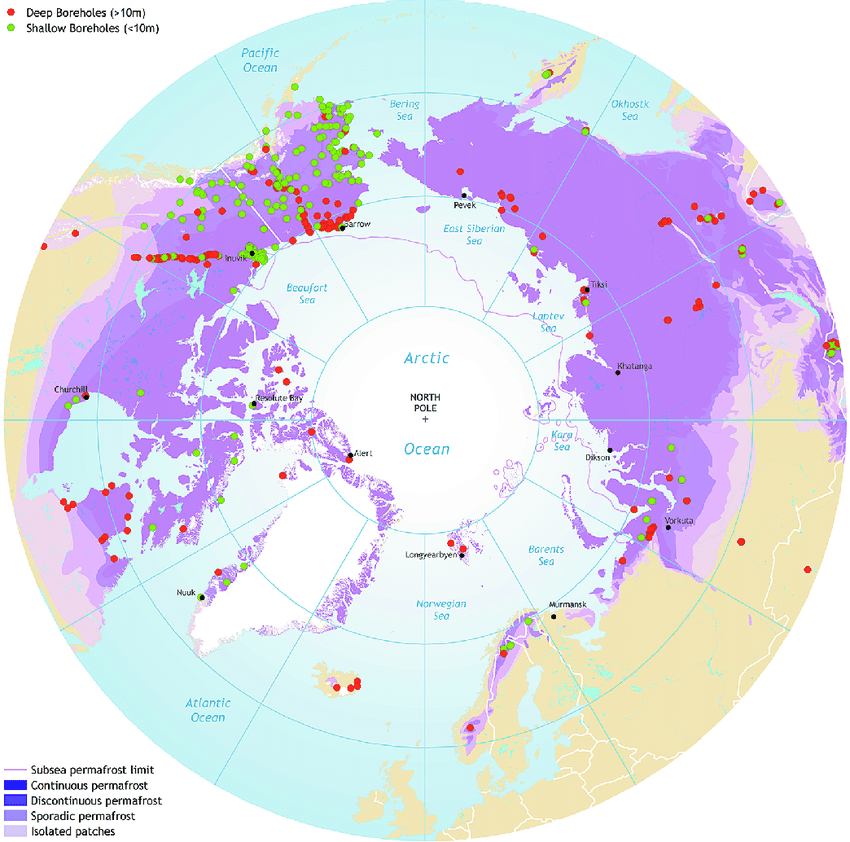
What is permafrost melt?
According to the International Permafrost Association, permafrost is soil or rock that remains at or below 0 degrees Celsius for at least two years. Permafrost, contrary to its name, is not permanently frozen. Its top layer, known as the active layer, thaws in the summer and refreezes in the winter. Therefore, permafrost can only occur in colder climates, such as the Northern and Southern hemispheres or at higher elevations.
Below is an illustration of the composition of permafrost soil.
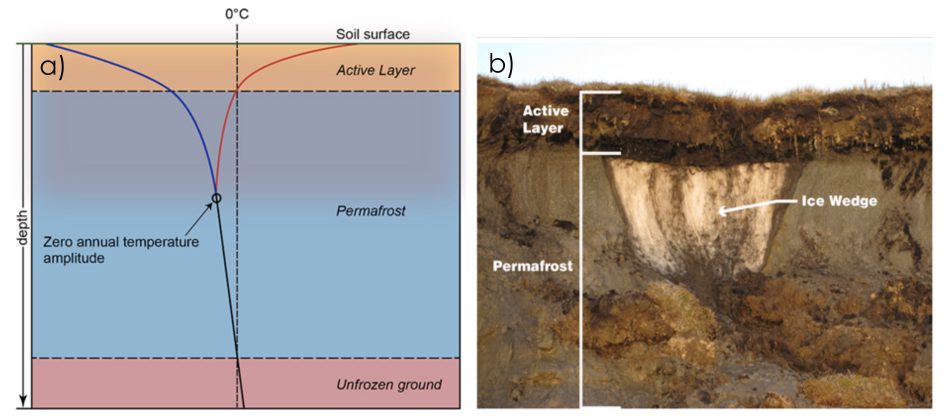
Permafrost melt and global warming
Climate change and global warming have profoundly impacted Planet Earth. It is a key driver for the loss of permafrost. According to reports, warming in the Arctic has been twice as fast as the world average over the last 50 years. As a result, the Arctic Ocean’s ice cover has reached its lowest point in over 1000 years. This is especially alarming in terms of the albedo effect, as ice and snow are two of the surfaces that reflect the most solar radiation (see image below).
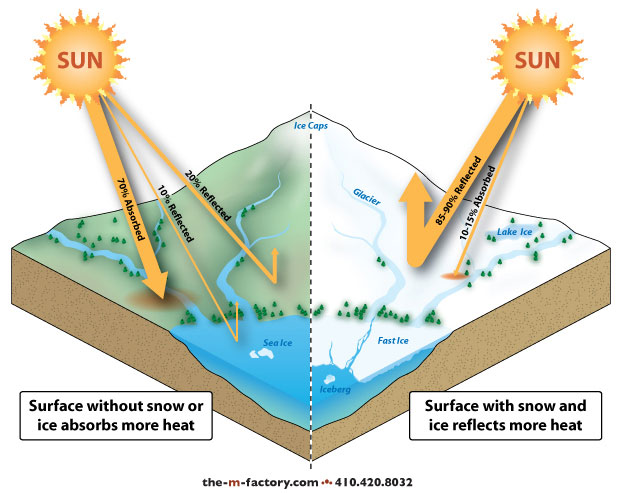
Permafrost melt impacts the Carbon Feedback Loop
Scientists are concerned about the potential effect of melting permafrost on climate change through what is known as the carbon feedback loop. This occurs according to the amount of carbon dioxide (CO2) and methane (CH4) permafrost releases each year. For instance, the Arctic Report Card states that permafrost melt releases approximately 0.3 to 0.6 gigatons of CO2 per year. For comparison, commercial flights created 915 million tonnes of CO2 in 2019.
A carbon feedback loop is a process of accelerated heating produced by temperature and CO2 level changes in the atmosphere. In other words, climate change and global warming are causing permafrost to thaw faster. As permafrost thaws, even more carbon dioxide is released into the atmosphere, resulting in greater warming and further permafrost loss.
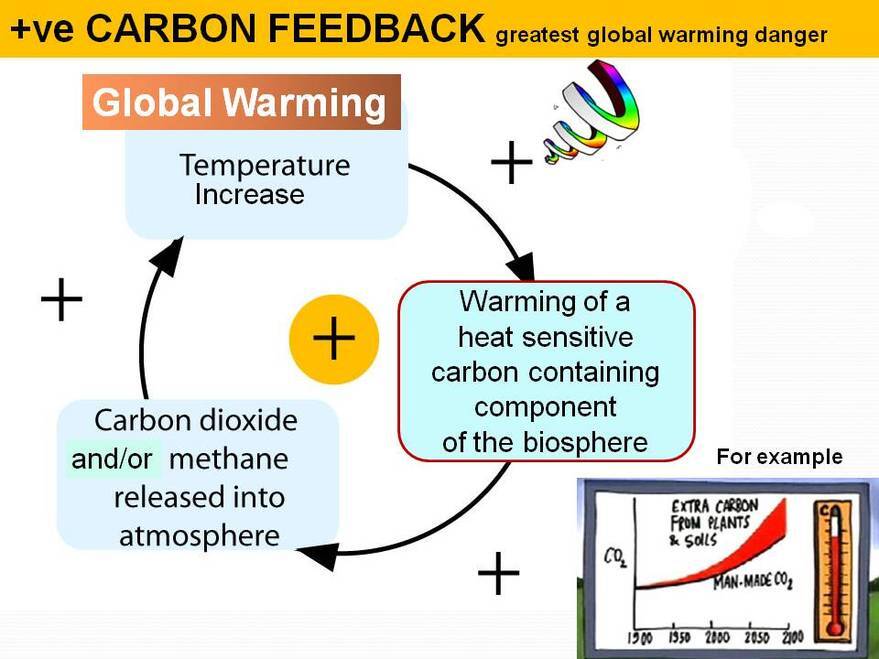
Permafrost acts as a Methane (CH4) lid
Imagine containing methane with a blanket. If that blanket were to be removed, it would be released into the atmosphere, further intensifying climate change and global warming. In this way, permafrost acts as a lid for deep sources of methane near the earth’s surface. When permafrost thaws quickly, this ‘lid’ becomes increasingly leaky. In the worst cases, this leads to the formation of explosive crater structures.

Permafrost melt creates thermokarst lakes
Aside from the release of greenhouse emissions, the loss of permafrost causes a slew of other problems. On a broad scale, it creates thermokarst lakes. These are also a source of greenhouse gas emissions from respiring CO2 and CH4 caused by organic matter in runoff and thawing permafrost. The anaerobic conditions in the lake bottom sediment cause significant rates of CH4 emission, which persist over the winter when methane is trapped in ice bubbles. Whilst they are a source of emissions, Thermokarst lakes also act as an absorber of solar radiation.
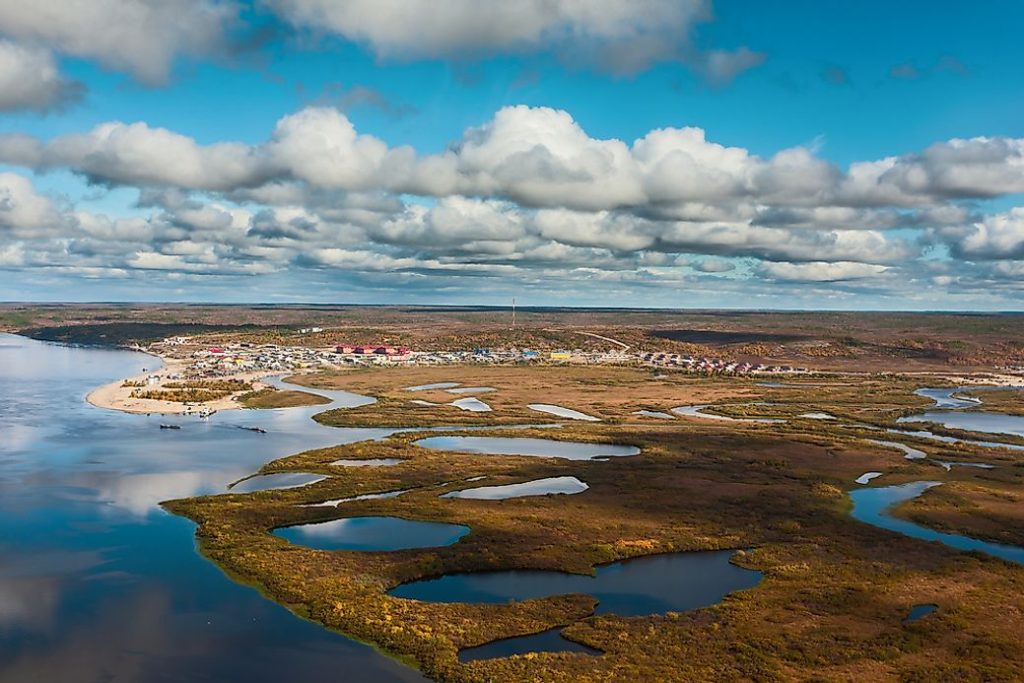
Permafrost melt is impacting communities
When permafrost melts, it causes many problems for the people who live in nearby. For example, permafrost can transform the topography to the point of liquefying landscapes. Roads and residences are frequently damaged, threatening food and transportation.
Moreover, prolonged thawing of permafrost can result in the sedimentation of water bodies such as rivers. Increased sediment and carbon loads profoundly impact macroinvertebrates, which may severely harm the lower trophic levels and the overall health of fish.

Dormant Prehistoric Pathogens lie in Permafrost
The rapid melting of permafrost isn’t just creating issues for rising global temperatures. Its loss may also lead to the spread of dormant prehistoric pathogens frozen in the ice. For instance, scientists have discovered two giant viruses in the depths of the Siberian permafrost that were active 30,000 years ago! Although the viruses offer minimal risk to humans and animals, we still don’t know what other forms of pathogens are lurking deep inside the permafrost. These findings are troubling for scientists as there is a risk that pathogens lurking in permafrost may not have evolved alongside the human immune system. For more on pathogens in permafrost see the video below.
40% will thaw at 2oC of Warming. What happens if it all thaws?
The soil of the Northern permafrost area contains around 1,500 billion tonnes of organic carbon. That’s approximately twice as much as there is in the atmosphere. According to the IPCC’s 5th report, we would lose around 37% of our permafrost under the RCP2.6 scenario. The RCP8.5 pathway, on the other hand, will result in the loss of 81% of permafrost zones.
Many are citing permafrost loss as the possible climate tipping point. There is no doubt that permafrost will accelerate climate change; the issue is how much. If all permafrost melts, the environmental consequences would be catastrophic, and global warming will likely surpass the 1.5oC danger line set by the Paris Agreement. The worst case projections would see the following impacts:
- An increasingly hotter and inhospitable planet.
- Increased frequency of extreme weather events.
- Increased likelihood pandemics and spread of diseases.
Avoiding a Climate Tipping point
Although, it is unlikely that all permafrost would melt, its loss would indicate that we have long passed the climate tipping point. To avert a catastrophe like this, we must battle climate change and reduce global warming. As tough as it may appear, we have numerous choices to mitigate its loss and avoid the consequences.
Firstly, we must lower our greenhouse emissions. It is not a question of if or when. We must reduce our greenhouse gas emissions as swiftly possible. As indicated by the discussions held during COP26, achieving net-zero emissions as soon as possible is imperative to address climate change. This recent THRIVE article explores the many policy alternatives for reducing glasshouse gas emissions. Ideally, we should be aiming for net-zero before 2050.
Secondly, halting industrial activities in known permafrost zones will reduce permafrost cover loss. The oil and gas industry are well-known disruptors that increase permafrost melting. Moreover, the black carbon created by combustion disrupts the albedo process.
Although many of us do not live in permafrost zones and are not directly affected, the disappearance of permafrost should concern us all. We all play a part in mitigating the effects of climate change, and it is our duty to avoid the worst case scenarios. Subscribe to the THRIVE project newsletter to learn more fascinating facts about the environment and sustainability. Consider volunteering if you want to be a part of the answer. The THRIVE project encourages individuals concerned and passionate about sustainability to join.